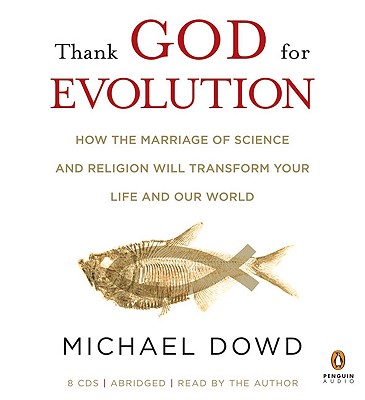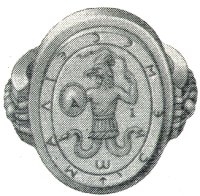Even if I walk in the light, I am not the light.
Even if I am a taut stringed lute, I am not the lute player
—Jalāl ad-Dīn Muhammad Rūmī
Seeing Michael Dowd give a discussion on his work to prevent the catastrophe of global climate change was interesting. He appeared at my local Unitarian Universalism church. Dowd outlined a “new” movement where people of all faiths are coming together with Science and scientists to discuss and hopefully combat climate change.
Religious naturalism is an approach to spirituality that is devoid of supernaturalism. The focus is on the religious attributes of the universe/nature, the understanding of it and our response to it (interpretive, spiritual and moral). These provide for the development of an eco-morality. Although it has an ancient heritage in many philosophical cultures, this modern movement is currently not well defined. Theistic or nontheistic religious naturalism is a basic theological perspective of liberal religion and religious humanism, according to some sources.
Religious naturalism is concerned about the meaning of life, but it is equally interested in living daily life in a rational, happy way. An alternative, more anthropocentric approach, is to look at it as answering the question: “What is the meaning of one’s life and does it have a purpose?” It is an approach to understanding the natural world in a religious way and does not offer a detailed system of beliefs or rituals. Religious naturalism also attempts to amalgamate the scientific examination of reality with the subjective sensory experiences of spirituality and aesthetics. As such, it is a combination of objectivity with religious emotional feelings and the aesthetic insights supplied by art, music and literature. It is a promising form of contemporary religious ethics and pluralism responding to the challenges of late modern religious transformations and ecological peril. In so doing, it is emerging as an increasingly plausible and potentially rewarding form of religious moral life consistent with the insights of the natural sciences.
http://en.wikipedia.org/wiki/Religious_naturalism
This is a very adimarable goal. I enjoyed Dowd’s talk, until he started discussing Humanism. Dowd himself and his wife, Connie Barlow, are partners and Co authors. Both have spent more than a decade on the road discussing their views, books and the problem of the scientific community in our modern lives.
Dowd himself admits he is a preacher, an ordained minister. Connie is described as an author of “popular science” books. Popular science books, the term doesn’t bode well.
Dowd outlined the need to view reality with reverence and the physical as sacred.
…….
The outer world of earthly existence corresponds in all its details to the inner world of man’s soul, and there is a similar correspondence between the Garden of the Heart and the Garden of the Soul, but these are only two particular instances of the general truth that all the different domains in the Universe correspond to each other in that each is an image of the Universe itself.
–Martin Lings, THE SYMBOL
QVOD SVPERIVS EST EST EST SICVT ID QVOD INFERIVS
(“The top is like the below”)
MACROPROSOPVS – Macrocosm
MICROPROSOPVS – Microcosm
Now, this is great. Of course reality is sacred as is the very ground beneath my feet. Dowd admirably preaches and teaches a philosophy of reality as sacred. Hardly news to me or anyone with an ounce of sanity, in my opinion.
For Dowd, reality, or God as he interchangeably calls or labels things, is sacred and must be treated as such. Reverence for all, in order to prevent climate change… Dowd outlines this by dismissing God, destroying any notion of the supernatural and proposes that observation is our savior and will enable the unification of science and religion. Of course this is overly simplistic and not something I could get behind.
Not that scientific and aesthetic understanding is not necessary –but it should do its work faithfully and immerse itself and disappear in the truth of the relation which surpasses understanding and embraces what is understandable.
–Martin Buber (I And Thou)
By discarding the divine for:
“reality” is divine, but only that which is
” observable” we are being dishonest. By dishonest that is, to me it is dishonest.
Observation only works due to assumptions.
Assumptions include a shared language, for example if we are discussing chickens it is assumed we are discussing chickens that all have two legs and two wings, in reality what if the chicken is deformed? In a real sense this means we are assuming like and like. We are assuming that 1 (chicken) plus 1 (chicken) is 2 (chickens)…. Assuming that both chickens are equal. Which in the real world they would not be.
Observation only works due to an agreed upon yardstick. To quote Dowd
“You don’t have to believe in the sea, it’s just there.”
No, you are wrong Mr Dowd. The sea is only the sea because we agree it is the sea. If we measured using an electromagnetic measuring device, for example, we may have problems separating the sea from nearby rivers. In turn, if we change our yard stick a drop of rainwater is the sea. Benoit Mandelbrot demonstrates this in his essay on the coastline of Britain, demonstrating it is of infinite length, measuring from rocks, stones, sand… atoms etc.
The work of Werner Karl Heisenberg famously explored the problem of light being a particle and a wave, though I understand to some modern physicists the solution is that it’s a wave. At the subatomic level we can only measure where something is or its velocity, not both. To summarize Heisenberg we can simply say the
“observed and observer are inseparable ”
This means any observation is a compromise as it is fully changed by being observed. People may counter this by saying this is only at the subatomic level. Again though, it depends on our yard stick. There are numerous ways and means that demonstrate this phenomenon of the inseparable nature of observation. In the end, it is just a complex way if stating observation is dependent upon perspective and perception. For example if we only studied the sky at night we could learn many things, during the day, yet other things, at both times we observe the sky.
Every experiment destroys some of the knowledge of the system
which was obtained by previous experiments.
“Critique of the Physical Concepts of the Corpuscular Theory” in The Physical Principles of the Quantum Theory (1930) as translated by Carl Eckhart and Frank C. Hoyt, p. 20; also in “The Uncertainty Principle” in The World of Mathematics : A Small Library of the Literature of Mathematics (1956) by James Roy Newman, p. 105
This isnt to mention other things like Godel’s incompleteness theorem, that demonstrates that the only logical conclusion of logic is that logic doesn’t work.
A statement sometimes known as Gödel’s second incompleteness theorem states that if number theory is consistent, then a proof of this fact does not exist using the methods of first-order predicate calculus. Stated more colloquially, any formal system that is interesting enough to formulate its own consistency can prove its own consistency iff it is inconsistent.
http://mathworld.wolfram.com/GoedelsIncompletenessTheorem.html
At a basic level, if we started to discuss Star Wars with a dog, the dog would not understand who Darth Vader is…. sadly humanists are assuming that through observation we can understand reality, just as a dog can one day discuss Luke Skywalker. Uh, no….
But the cult of the intellect knows no bounds.
The point where we seperate from our origins…or the divine/God.
It is this type of world along with its overriding orientation and pursuits which we have destroyed. Our society is man-made, not a divine order. It is one in fact which represents a projection of the human mind that has cut its links with the divine and with the earth; and in so far that it has any ideals these are purely temporal and finite and concern only the terrestrial welfare of its members.
–Philip Sherrard, MODERN SCIENCE AND THE DEHUMANIZATION OF MAN.
To a humanist mindset and many other similar groups (notably modern scientific pantheists for example) throwing out the divine makes perfect sense. If logic, observation, bar charts and other intellectual tools won’t cover reality then anything else is garbage, to the humanist (collectively humanists but each and every group with this mindset).
I am reminded by the recent book/TV show where Stephen Hawkins disproves God. All these groups seem to have one thing in common, an overly simplified verging on puerile understanding or concept of God. The science may or may not be remarkable, advanced and inspiring, but the understanding of the sacred is childlike at best. Hawkins demonstrated this very adequately in his television appearance, in his defense I have not, nor do I intend to read his book.
If the doors of perception were cleansed everything would appear to man as it is, Infinite. For man has closed himself up til he sees all things thro’ narrow chinks of his cavern.
–William Blake (The Marriage of Heaven and Hell)

Dowd, like Hawkins touches upon God, largely only in a puerile simplistic manner, the sky daddy playing chess. This overly simplistic image betrays a lack of perspective or genuine lack of investigation into the nature of God. As such, there is no place beyond the observable, the logical or even beyond the physical. As such we, to this modernist mindset, are merely dogs learning about Star Wars, one day able through language and concept to discuss the finer points of Star Wars.
Of course the talk was only an hour or so long, and I have not actually read his books, so my understanding may be limited.
Language of course fails us every time. Modernists use mathematics to overcome this.
The problem with secular liberals, as distinct from traditionalist liberals and traditionalist conservatives, is that they insist on inventing reality by denying any higher truth than themselves. They deny the natural law of holistic education, including the metalaw of holistic haqq, which is to be sought heuristic ally and holistically not created by human fiat.
By claiming the source of truth they deny the essence of anything and anything, because without essence everything is relative and truth cannot exist. If everything is relavistic, there is no purpose, then the practice of human responsibilities and the corresponding and resulting human rights has no logical basis.
The denial of any reality beyond the power of personal preference is the source of all totalitarian ideologies, beginning with the liberal logic of the French Revolution, which produced Communism, Fascism, and both Zionist and Muslim Statism today, where the sovereign state or global caliphate claims divinity based on top-down political process of might makes right.
The Metalaw of Holistic Haqq: Toward a Just Third Way beyond Capitalism and Socialism in the Holy Land
by Robert Dickson Crane….
In conclusion, Dowd and other humanists make giant compromises. Dowd does however stress the urgency of climate change. His concepts work for the ignorant i.e. those expecting the rapture, denying evolution, biblical aging of the planet and other ridiculous literalisms that demonstrate once again observer and observed change things; as literalisms as found in modern times, never existed in the ancient world. However, Dowd is educating the small of understanding, the ones that arguably need to be spoon fed understanding. His goals are also good ones. However, I don’t agree with all his political leanings. Sadly, I think Dowd’s allusions fit well at my church amongst the right people (which may or may not be a good thing depending on your perspective). I enjoyed his conclusions i.e. live in harmony with the earth or die, it is not all doom and gloom, we may do better in regards to combating climate change.
.
…






